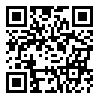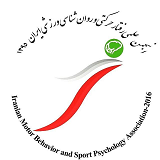Sun, Oct 19, 2025
[Archive]
Volume 1, Issue 2 (11-2019)
IJMCL 2019, 1(2): 41-46 |
Back to browse issues page
Download citation:
BibTeX | RIS | EndNote | Medlars | ProCite | Reference Manager | RefWorks
Send citation to:



BibTeX | RIS | EndNote | Medlars | ProCite | Reference Manager | RefWorks
Send citation to:
Siekirk N, Lai Q, Kendall B. (2019). Effects of Limb-Specific Fatigue on Motor Learning during an Upper Extremity Proprioceptive Task. IJMCL. 1(2), 41-46. doi:10.29252/ijmcl.1.1.76
URL: http://ijmcl.com/article-1-29-en.html
URL: http://ijmcl.com/article-1-29-en.html
Division of Kinesiology, College of Education, Wayne State University, Detroit, MI , bkendall22@gmail.com
Abstract: (8742 Views)
Background: The effects of limb-specific fatigue on motor skill acquisition and retention are not clear.
Objective: To investigate the impact of limb-specific fatigue on the acquisition and retention of an upper extremity proprioceptive task.
Methods: Twenty-two right-handed participants were randomly and equally assigned to either fatigued or non-fatigued protocols. Acquisition phase for the upper extremity task consisted of 5 blocks each with 12 trials. After 48 hours, all participants performed 1 block retention test (12 trials) with the left arm followed by 1 block transfer test (12 trials) with the right arm. Performance for each block was analyzed using a one-way analysis of variance (ANOVA). Performance differences between groups for the acquisition was analyzed using a 2 x 5 (group x block) ANOVA with repeated measures on the blocks. The performance on retention-transfer was analyzed by separate ANOVAs. Statistical significance set at p < .05.
Results: The fatigued condition displayed significantly more E than the non-fatigue group (p < .05). During retention and transfer, the fatigue group again displayed higher E compared to the non-fatigued group (p < .05).
Conclusion: The results of this study support that limb-specific fatigue may produce performance deficits during acquisition and interfere with motor skill retention.
Objective: To investigate the impact of limb-specific fatigue on the acquisition and retention of an upper extremity proprioceptive task.
Methods: Twenty-two right-handed participants were randomly and equally assigned to either fatigued or non-fatigued protocols. Acquisition phase for the upper extremity task consisted of 5 blocks each with 12 trials. After 48 hours, all participants performed 1 block retention test (12 trials) with the left arm followed by 1 block transfer test (12 trials) with the right arm. Performance for each block was analyzed using a one-way analysis of variance (ANOVA). Performance differences between groups for the acquisition was analyzed using a 2 x 5 (group x block) ANOVA with repeated measures on the blocks. The performance on retention-transfer was analyzed by separate ANOVAs. Statistical significance set at p < .05.
Results: The fatigued condition displayed significantly more E than the non-fatigue group (p < .05). During retention and transfer, the fatigue group again displayed higher E compared to the non-fatigued group (p < .05).
Conclusion: The results of this study support that limb-specific fatigue may produce performance deficits during acquisition and interfere with motor skill retention.
Type of Study: Original Article |
Subject:
1. Motor learning
Received: 2019/07/3 | Accepted: 2019/10/4
Received: 2019/07/3 | Accepted: 2019/10/4
References
1. Alderman, R. B. (1965). Influence of local fatigue on speed and accuracy in motor learning. Research Quarterly. American Association for Health, Physical Education and Recreation, 36(2), 131-140. [DOI:10.1080/10671188.1965.10614670]
2. Benson, D. W. (1968). Influence of imposed fatigue on learning a jumping task and a juggling task. Research Quarterly. American Association for Health, Physical Education and Recreation, 39(2), 251-257. [DOI:10.1080/10671188.1968.10618045]
3. Brooks, V. B. (1983). Motor control: how posture and movements are governed. J Physical therapy, 63(5), 664-673. [DOI:10.1093/ptj/63.5.664]
4. Carron, A. V. (1969). Physical fatigue and motor learning. Research Quarterly. American Association for Health, Physical Education and Recreation, 40(4), 682-686. [DOI:10.1080/10671188.1969.10614902]
5. Carron, A. V., & Ferchuk, A. D. (1971). The effect of fatigue on learning and performance of a gross motor task. Journal of motor behavior, 3(1), 62-68. [DOI:10.1080/00222895.1971.10734893]
6. Cotten, D. J., Thomas, J. R., Spieth, W. R., & Biasiotto, J. (1972). Temporary fatigue effects in a gross motor skill. Journal of motor behavior, 4(4), 217-222. [DOI:10.1080/00222895.1972.10734937]
7. Davey, P. R., Thorpe, R. D., & Williams, C. (2002). Fatigue decreases skilled tennis performance. Journal of sports sciences, 20(4), 311-318. [DOI:10.1080/026404102753576080]
8. Enoka, R. M., Baudry, S., Rudroff, T., Farina, D., Klass, M., & Duchateau, J. (2011). Unraveling the neurophysiology of muscle fatigue. Journal of Electromyography and Kinesiology, 21(2), 208-219. [DOI:10.1016/j.jelekin.2010.10.006]
9. Evans, R. K., Scoville, C. R., Ito, M. A., & Mello, R. P. (2003). Upper body fatiguing exercise and shooting performance. Military medicine, 168(6), 451-456. [DOI:10.1093/milmed/168.6.451]
10. Forestier, N., & Nougier, V. (1998). The effects of muscular fatigue on the coordination of a multijoint movement in human. Neuroscience letters, 252(3), 187-190. [DOI:10.1016/S0304-3940(98)00584-9]
11. Godwin, M. A., & Schmidt, R. A. (1971). Muscular fatigue and learning a discrete motor skill. Research Quarterly. American Association for Health, Physical Education and Recreation, 42(4), 374-382. [DOI:10.1080/10671188.1971.10615084]
12. Huysmans, M., Hoozemans, M., Van der Beek, A., De Looze, M., & Van Dieën, J. (2008). Fatigue effects on tracking performance and muscle activity. Journal of Electromyography and Kinesiology, 18(3), 410-419. [DOI:10.1016/j.jelekin.2006.11.003]
13. Kanekar, N., Santos, M. J., & Aruin, A. S. (2008). Anticipatory postural control following fatigue of postural and focal muscles. Clinical Neurophysiology, 119(10), 2304-2313. [DOI:10.1016/j.clinph.2008.06.015]
14. Lee, H.-M., Liau, J.-J., Cheng, C.-K., Tan, C.-M., & Shih, J.-T. (2003). Evaluation of shoulder proprioception following muscle fatigue. Clinical Biomechanics, 18(9), 843-847. [DOI:10.1016/S0268-0033(03)00151-7]
15. Lyons, M., Al-Nakeeb, Y., & Nevill, A. (2006). Performance of soccer passing skills under moderate and high-intensity localized muscle fatigue. Journal of Strength and Conditioning Research, 20(1), 197. [DOI:10.1519/R-17114.1]
16. Masters, R., Poolton, J., & Maxwell, J. (2008). Stable implicit motor processes despite aerobic locomotor fatigue. Consciousness and Cognition, 17(1), 335-338. [DOI:10.1016/j.concog.2007.03.009]
17. Mierau, A., Schneider, S., Abel, T., Askew, C., Werner, S., & Strüder, H. K. (2009). Improved sensorimotor adaptation after exhaustive exercise is accompanied by altered brain activity. Physiology & behavior, 96(1), 115-121. [DOI:10.1016/j.physbeh.2008.09.002]
18. Paillard, T. (2012). Effects of general and local fatigue on postural control: a review. Neuroscience & Biobehavioral Reviews, 36(1), 162-176. [DOI:10.1016/j.neubiorev.2011.05.009]
19. Schmidt, R. A. (1969). Performance and learning a gross motor skill under conditions of artificially-induced fatigue. Research Quarterly. American Association for Health, Physical Education and Recreation, 40(1), 185-190. [DOI:10.1080/10671188.1969.10616658]
20. Seidler, R. D., Bernard, J. A., Burutolu, T. B., Fling, B. W., Gordon, M. T., Gwin, J. T., . . . Lipps, D. B. (2010). Motor control and aging: links to age-related brain structural, functional, and biochemical effects. Neuroscience & Biobehavioral Reviews, 34(5), 721-733. [DOI:10.1016/j.neubiorev.2009.10.005]
21. Shields, R. K., Madhavan, S., & Cole, K. (2005). Sustained muscle activity minimally influences dynamic position sense of the ankle. Journal of Orthopaedic & Sports Physical Therapy, 35(7), 443-451. [DOI:10.2519/jospt.2005.35.7.443]
22. Thomas, J. R., Cotten, D. J., Spieth, W. R., & Abraham, N. L. (1975). Effects of fatigue on stabilometer performance and learning of males and females. Medicine and science in sports, 7(3), 203-206. [DOI:10.1249/00005768-197500730-00018]
23. Whitley, J. D. (1973). Effects of increasing inertial resistance on performance and learning of a training task. Research Quarterly. American Association for Health, Physical Education and Recreation, 44(1), 1-11. [DOI:10.1080/10671188.1973.10615170]
24. Whitley, J. D. (1975). Effects of Maximizing Inertial Resistance on Performing and Learning a Motor Task. Research Quarterly. American Alliance for Health, Physical Education and Recreation, 46(1), 110-119. [DOI:10.1080/10671315.1975.10615311]
25. Wolpert, D., Pearson, K., & Ghez, C. (2013). The organization and planning of movement. Principles of neural science, 5, 743-767.
Send email to the article author
| Rights and Permissions | |
 |
This work is licensed under Attribution 4.0 International (CC BY 4.0). |












